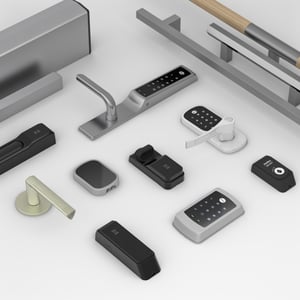Have you heard the term greenwashing? Are you curious if you’re doing it? Do you want to know how to avoid it? With the EU's commision proposal for new consumer rights and a ban on greenwashing recently to support a Circular Economy transition, we take a closer look on what that means for companies.
“Greenwashing” originated in the mid 1980s when a leading environmental journalist, Jay Westerveld, used it to describe how hotels were marketing their towel services. The industry was promoting the reuse of towels as the “green option” when in truth it was a cost saving initiative. The term remains intently relevant today.
Whether you’re brainstorming how to implement a sustainability program for your company, or if you’re taking a closer look at the one in place, these thoughts and examples are relevant for you.
Reviewing the EU's Proposal
The European Commission released a proposal on March 30th 2022 about a new Consumer Rights and Greenwashing Ban. The changes are designed to ensure that consumers can trust the marketing they see on packaging thereby allowing them to make genuine eco-friendly purchasing decisions.
At its core, the proposal is designed to give consumers the right to know two things:
1) How long is a product designed to last?
and
2) Can the product be repaired?
Durability and repairability echo recent industry trends that highlight the root of the greenwashing and circular economy problem. Companies too frequently make environmental claims related to future environmental performances without clear, verifiable or objective commitments, targets and plans.
The proposal addresses the Unfair Commercial Practices Directive (UCPD) by adding to the list of product characteristics about which a manufacturer cannot mislead consumers. A notable addition pertains to not informing about features introduced to limit durability. For example, have you ever experienced having an electronic product slow down or degrade in functionality after a set period of use? This is often orchestrated so you will upgrade your device.
Designing Products for a Circular Transition
Durability, repairability, & reuse. These are the solutions and innovative keys that will, (in tandem with many other keys) unlock the circular economy. If every manufacturer could first build their products to last long, then give clear instructions on what parts can be reused, be repaired, or dissasembled for reuse, we would be consuming less and reusing more. Here are two companies that are paving the path in those two directions.

Erem: Biocircular Footwear
Erem is solving the durability problem by making their products bio circular and benign. Bio-circular means that the materials in their products have proven paths back to nature (i.e. can this material fully break down in a landfill or composting setting?).
For Erem, benign means that once their products have undergone biological anaerobic or aerobic degradation there will be no harmful substances left behind that could pose problems for the environment.
This is an example of tackling circularity at the root of the problem, because it targets material composition. Any sustainability or circularity initiative leads back to knowing exactly what chemicals are in a product.
 ASSA ABLOY: Implementing End-of-Life Programs for Products
ASSA ABLOY: Implementing End-of-Life Programs for Products
One Toxnot customer that's demonstrating how to tackle repairability and reuse is Assa Abloy. ASSA ABLOY recently launched a product end-of-life recycling program for customers. Most of their operating companies offer a product end of life recycling program. This includes working with local recycling agencies.
When asked what Circularity success looks like at ASSA ABLOY, Amy Musanti (Sustainability Director) notes, "We would love to have more customers take advantage of the product end of life recycling program and also tell us how to improve. Ideally, we’d like to have a larger focus on reuse/redistribution and refurbish/remanufacture activities in the future."
Take back programs allow for genuine reuse rather than solely recyclinga product. If economies like the EU want to transition to a greener, circular future, it's time for manufacturers to move their internal conversations beyond the single framework of recyclability. Recycling creates another step in a product’s lifetime but doesn't fix our problem of finite resources.
Circularity Needs Material Data Infrastructure
For a truly safe and sustainable Circular Economy, companies need systems that allow to design out hazards in products that would otherwise remain in downstream programs for products when being dissassembled, reused, or recycled. This is where Toxnot can help you get started! Knowing your materials you're using in products are future-proofed for circular regulations is the first step. Our SDS Screener is a great tool to get a glimpse into what our AI can instantly discover!
Our platform allows you to easily access your supplier data, review your entire product portfolio instantly, and delight your customers with timely customized responses. Supply chains can be complex, but you don't need a complex solution. Start today!


